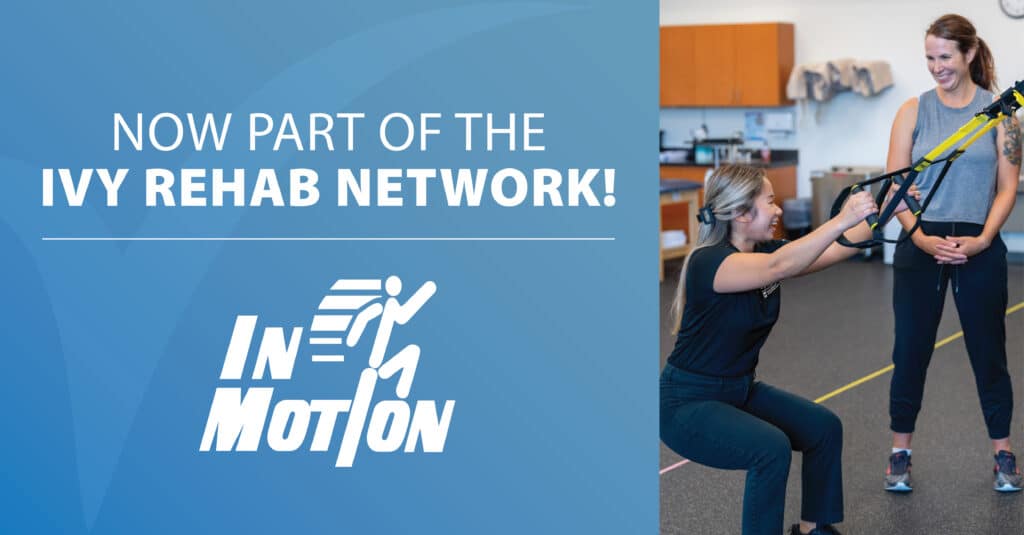Do you have urinary or fecal incontinence? Recently had prostate surgery? Difficulty with erectile dysfunction? Pelvic floor muscle training, or Kegel exercises, may be for you.
What is a Pelvic Floor?
Men have a pelvic floor just like women do – but you don’t hear much about them. If you think of the “core” or central trunk, there are 4 sides to a “box” that serves as the primary point of stability for everything we do. The top of the box is our “diaphragm” – a firm, muscle that pushes the rib cage up and controls our breathing.
The back of the “box” is our strong, long and short spine muscles and vertebral column (spine), and the front of the “box” is made from 3 layers of abdominal muscles. The bottom of the “box”’ is the pelvic floor, a complex muscle that helps stabilize our pelvis when our hips move, like when we walk, and also contracts and relaxes to allow us to urinate or have a bowel movement.
Pelvic muscles are located within the boney structures of your pelvis and are responsible for preventing the loss of urine and stool, aiding in sexual function and supporting your internal organs. Also, these muscles also play an important role in the stabilization of the back and abdominal muscles.
What are Kegels and why should I do them?
Kegel exercises are specific to the pelvic floor. Keeping these muscles healthy and strong is VERY important to support your bladder and bowel! There are times, however, that the pelvic floor muscles may be TOO tight. Similar to how women experience postpartum pelvic pain, men can experience their own pelvic issues. This is generally associated with pelvic pain, difficulty with urine flow or constipation. If you think you have urinary incontinence or suspect you have a pelvic floor problem, consult a physical therapist specialist in pelvic floor rehabilitation prior to initiating a pelvic floor exercise program.
STEP 1: How do I find these pelvic floor muscles?
The key to reinforcing strong pelvic muscles is to identify where they are and properly isolate them. To do a Kegel correctly, imagine you were stopping urine flow or passing of gas. Gently draw these muscles “up and in” keeping your buttocks and leg muscles relaxed. Breathe normally. Be careful not to “overtighten” these muscles, contract approximately 50-75% of full effort. More IS NOT better. It can be just as challenging to stop contracting or relax these muscles as it is to activate and contract them.
STEP 2: Strengthen the muscles
Now that you have found your pelvic floor muscles…let’s get busy strengthening them! The muscles in your pelvic floor are made up of both endurance types of muscle fibers (meant to stay functioning a long time) and fast-twitch fibers (respond quickly to changes in pressure like a cough or sneeze). It is important to strengthen both types of muscle fibers with proper pelvic floor muscle exercises.
How many Kegels should a man do a day?
To strengthen your pelvic floor properly, do 2 types of pelvic exercises.
- Endurance Kegels: Do a Kegel for 5-10 seconds, relax the pelvic floor muscle completely for 5-10 seconds and repeat 10 times.
- “Quick” Kegels: Quickly contract and relax the muscles, 10 repetitions.
Repeat both of these pelvic exercises 3-4 times daily. Before starting Kegel exercises, be sure to urinate so your bladder is empty. Pelvic floor exercises for men can be done in any position, but it may be easiest to do them laying down initially until your strength improves. If you feel the muscles begin to fatigue while performing these pelvic floor exercises for men, simply take a break to allow the muscles to recover.
How can I strengthen my pelvic floor fast?
Proper isolation and consistent performance of Kegels is the key to strengthening your pelvic floor fast. Also, incorporating them into your daily routine is also a great way to strengthen your pelvic floor quickly. Contract your pelvic floor prior to the following activities:
- Going from sit to stand
- Lifting
- Coughing or sneezing
How long does it take to strengthen the pelvic floor?
True strength gains take 6 weeks to 2 months; however, you may notice changes in your symptoms sooner due to properly isolating and engaging the right muscles during functional tasks.
What should pelvic floor exercises feel like?
Kegels should feel like a gentle contraction of the muscles between your legs and you will feel your testicles raise up. You may also feel a tightening of your lower abdominals. If done properly, you should feel your anus contract. Kegels should not be painful.
Are squats good for the pelvic floor?
Squats can be very good for the pelvic floor, but be careful to not allow your buttocks muscles to do all the work! As a general rule of thumb, contract your pelvic floor during exhalation.
During a squat, inhale on the way down and exhale and contract and do a Kegel on the way up! Be sure and master the simple kegel exercise of isolating the pelvic floor muscle and contracting before you progress to a squat. Sometimes a bigger movement can “hide” a weak muscle and your pelvic floor may get a free ride.
What exercises are bad for the pelvic floor?
Full sit-ups where there is a ton of pressure on the pelvic floor are bad for the pelvic floor. Also, avoid lifting heavy weights and/or holding your breath during lifting exercises. Until the strength improves, avoid any activity that causes urinary leakage, ie. Running, jumping, or high impact activities. Try to practice “squeeze before your sneeze” so you are activating your pelvic floor fully to avoid a leak until your strength is improved.
Does walking strengthen weak pelvic floor muscles?
Yes, walking is a gentle cardiovascular exercise that helps to engage the core muscles, that rely on the foundation of the pelvic muscle.
How do you know if you have a weak pelvic floor?
If you leak urine or feces with coughing, laughing or sneezing, you may have a weak pelvic floor. Also, frequent or urgent urination can be a sign of a weak pelvic floor.
How can I strengthen my pelvic floor without Kegels?
If Kegels are not an option, for example, if you have a catheter in place or if your pelvic floor muscles are too tight, you can use the muscles that attach to the pelvis to help reinforce a strong pelvic floor. These include your inner thighs, buttock muscles and lower abdominals.
Men don’t talk about it, but a healthy, strong, and controlled male pelvic floor is critical to optimal function of the urogenital system, and a healthy low back, too. Be sure to seek out a physical therapist with specialized training in pelvic floor rehabilitation physical therapy You will be glad you did!
Article by Dr. Michelle R. Porter, PT, CAPP
Michelle R. Porter, DPT, CAPP, Ivy Rehab Howell, Michigan
Michelle began her career in physical therapy in 2002 upon earning a Doctor of Physical Therapy degree with honors from the University of Michigan. Lifelong learning and teaching have been an integral part of her career. Michelle has served as adjunct professor at The University of Michigan within the Biology and Physical Therapy Departments, has taught multiple continuing education courses specific to pelvic floor rehabilitation and served as a mentor to her colleagues. Her professional development includes advanced pelvic floor muscle training and physical therapy, Graston Technique, Kinesio Taping, multiple manual therapy techniques, LSVT for Parkinson’s Disease and dry needling. Michelle is a CAPP Certified pelvic floor PT for both men and women. She also holds a certification in dry needling from Integrative Dry Needling Institute.
Education:
- Certificate of Achievement in Pelvic Health (CAPP)
- Bachelor of Health Science, University of Michigan
- Doctor of Physical Therapy, University of Michigan
- Certified Integrative Dry Needling (CIDN)







